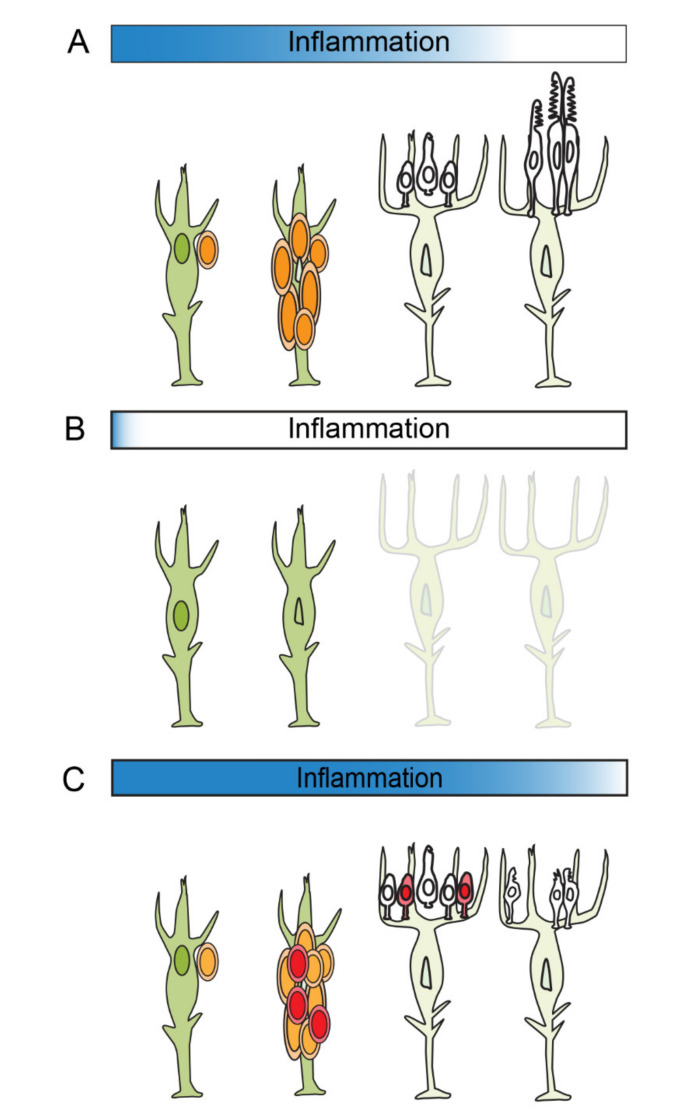Figure 2 Model of how inflammation regulates photoreceptor regeneration in zebrafish. (A) Following cell death, acute inflammation stimulates reprogramming and cell division among Müller glia and proliferation of Müller glia-derive progenitors. As inflammation resolves, Müller glia-derived progenitors exit the cell cycle and differentiate into photoreceptors. (B) Suppression of acute inflammation results in the failure of Müller glia to proliferate. (C) If acute inflammation is prolonged, Müller glia-derived progenitors undergo extra rounds of cell division. If resolution of acute inflammation fails, this compromises the maturation and survival of photoreceptors.
Image
Figure Caption
Acknowledgments
This image is the copyrighted work of the attributed author or publisher, and
ZFIN has permission only to display this image to its users.
Additional permissions should be obtained from the applicable author or publisher of the image.
Full text @ Cells

